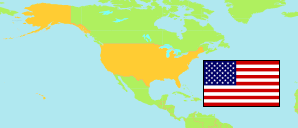
Kalawahine
Home Land in Hawaiian Native Areas
Contents: Population
The population development in Kalawahine as well as related information and services (Wikipedia, Google, images).
| Name | Status | Population Census 2000-04-01 | Population Census 2010-04-01 | Population Census 2020-04-01 | |
|---|---|---|---|---|---|
| Kalawahine | Home Land | ... | 319 | 308 |
Source: U.S. Census Bureau (web).
Explanation: Hawaiian home lands are trust lands.
Further information about the population structure:
| Gender (C 2020) | |
|---|---|
| Males | 153 |
| Females | 155 |
| Age Groups (C 2020) | |
|---|---|
| 0-17 years | 55 |
| 18-64 years | 202 |
| 65+ years | 51 |
| Age Distribution (C 2020) | |
|---|---|
| 80+ years | 11 |
| 70-79 years | 20 |
| 60-69 years | 48 |
| 50-59 years | 67 |
| 40-49 years | 28 |
| 30-39 years | 37 |
| 20-29 years | 36 |
| 10-19 years | 38 |
| 0-9 years | 23 |
| Urbanization (C 2020) | |
|---|---|
| Urban | 308 |
| »Race« (C 2020) | |
|---|---|
| White | 15 |
| Asian | 29 |
| Pacific Islander | 112 |
| Some other | 1 |
| 2 or more | 151 |
| Ethnicity (C 2020) | |
|---|---|
| Hispanic or Latino | 24 |
| Other | 284 |
